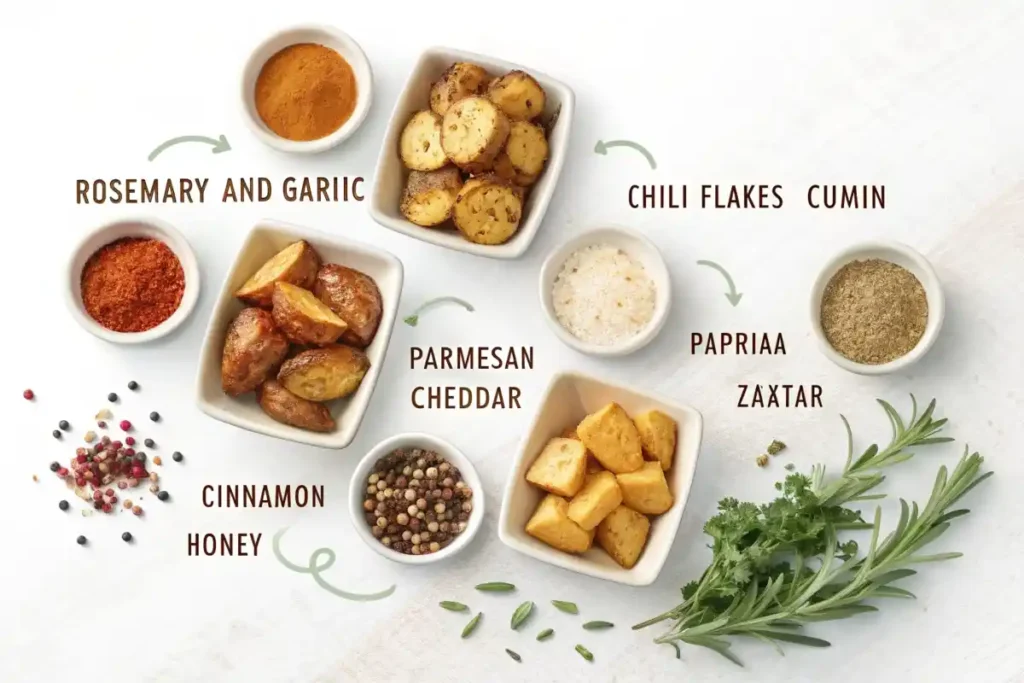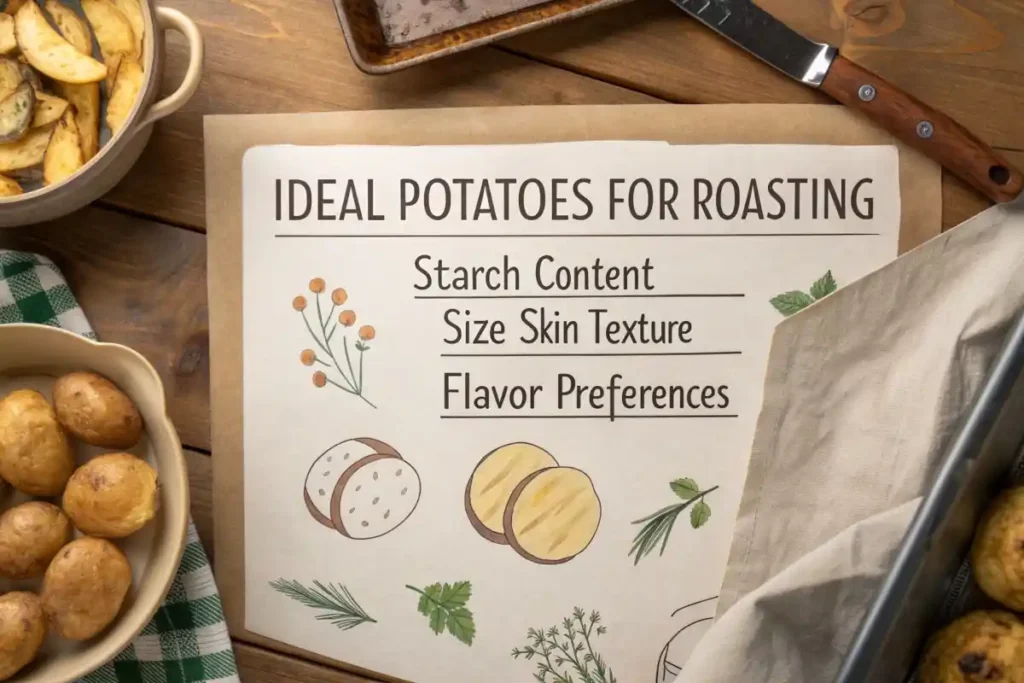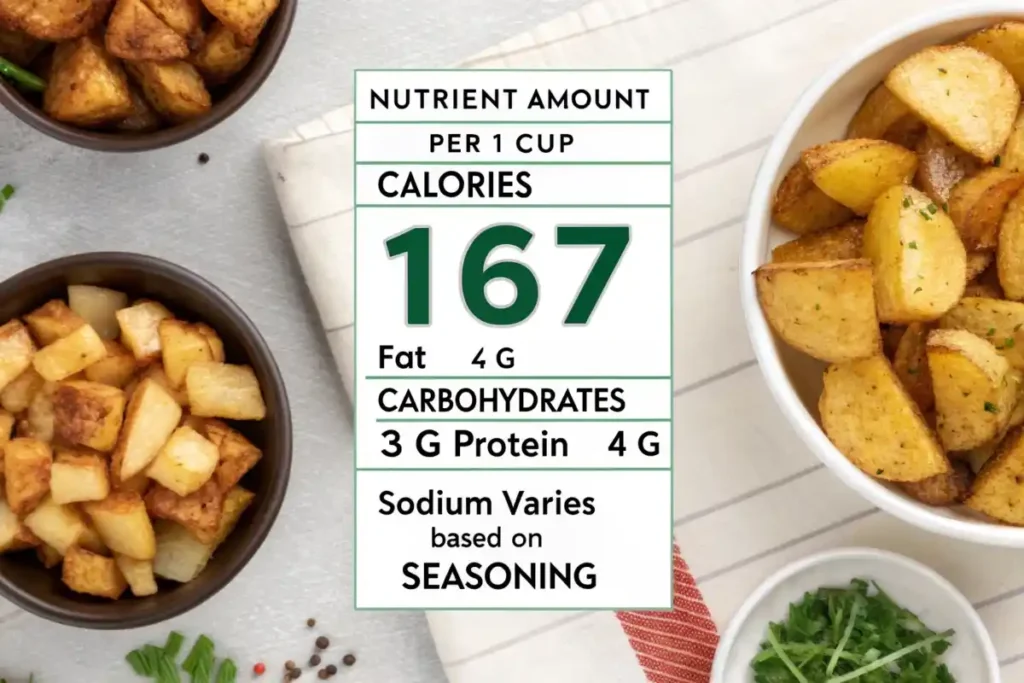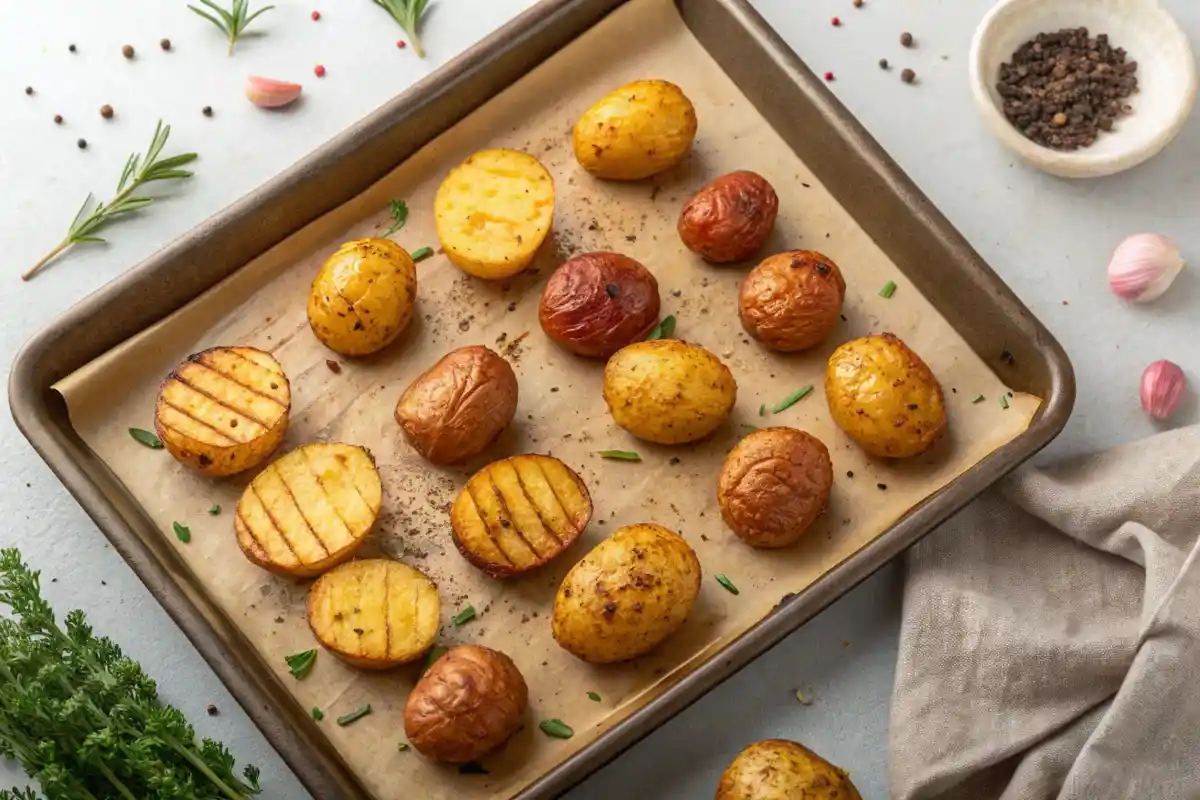Initial Overview: What potatoes are best for roasting?
Roasted potatoes are a classic staple in many American homes. They offer a comforting texture, savory taste, and incredible versatility. What potatoes are best for roasting? This question often arises when you’re at the grocery store, deciding which variety of potatoes will yield that perfect crispy exterior and fluffy interior. At the present time, countless spud varieties exist. However, certain types excel in delivering a golden-brown exterior and mouthwatering taste.
In this friendly guide, we will explore the top potato varieties for roasting. Furthermore, we will explain how their textures, flavors, and starch levels differ. Because these variations matter, your choice influences everything from crispness to moisture content. In the meantime, let’s dive in and discover which potatoes suit your roasting needs.
Top 5 Potato Varieties for Roasting
Below is a comprehensive list of five popular potato varieties. Each one offers unique qualities that make them prime candidates for a delightfully roasted dish.
1. Russet Potatoes
Russet potatoes are known for their high starch content. This trait results in a fluffy, almost pillowy interior once roasted. In contrast, their outer layer becomes incredibly crispy. For instance, if you prefer a crunchy shell that shatters when you bite into it, Russets might be your go-to choice.
- Texture: Light, airy interior with a crisp outer layer.
- Flavor: Mild and earthy.
- Best for: Achieving a well-browned exterior, especially when you toss them in oil.
- Tip: Cut them into medium-sized chunks, then soak them in cold water for about 20 minutes. This soaking helps remove excess starch, enhancing crispiness.
2. Yukon Gold Potatoes
Yukon Gold potatoes are a favorite for many home cooks. They have a medium starch level and a subtle buttery flavor. Because of their balanced starch content, these golden beauties maintain an appealing moistness inside. Meanwhile, the exterior can develop a lovely golden crust.
- Texture: Creamy, tender interior with moderate firmness.
- Flavor: Buttery, slightly sweet notes.
- Best for: Uniform and consistent browning, thanks to their thin skins.
- Tip: Toss them with olive oil and fresh herbs before roasting. To demonstrate, try rosemary or thyme for extra fragrance and taste.
3. Red Potatoes
Red potatoes are often considered waxy because their flesh is relatively firm and low in starch. In contrast to Russet potatoes, reds hold their shape very well. Therefore, if you enjoy potatoes that remain intact and have a smooth, dense interior, red potatoes may be your ultimate choice.
- Texture: Firm, dense interior with a smooth bite.
- Flavor: Mild, slightly sweet undertone.
- Best for: People who prefer a velvety texture without a super-fluffy interior.
- Tip: Slice red potatoes into wedges. Then coat them with a drizzle of oil and your favorite seasoning blend to deliver a crisp shell.
4. Fingerling Potatoes
Fingerling potatoes are small, elongated, and perfect for a rustic presentation. They have thin skins and a waxy interior. As a result, they become crispy on the outside while retaining a delicious creaminess inside.
- Texture: Dense yet creamy, with delicate skins.
- Flavor: Rich, buttery essence with subtle nuttiness.
- Best for: Quick roasting, since they’re naturally smaller.
- Tip: For instance, roast them whole for a stunning visual effect. Slice them lengthwise if you prefer more surface area for crisping.
5. Purple Potatoes
Purple potatoes might sound exotic, yet they provide a vibrant pop of color to your plate. Though their color can be surprising, they share characteristics with other waxy varieties. Hence, their interior stays moist, and their exterior can crisp up nicely.
- Texture: Firm and waxy with a moist interior.
- Flavor: Earthy, slightly nutty, and less sweet than Yukon Gold.
- Best for: Eye-catching roasted sides or salads with multi-colored potatoes.
- Tip: Pair them with bright ingredients like bell peppers or fresh herbs for a colorful dish.
In the meantime, here’s a quick joke to brighten your kitchen adventures:
“Why did the potato cross the road?
Because it saw a fork in the road!”
(We promise that’s the only corny joke here—though we are talking about potatoes, after all!)
Essential Factors to Consider When Choosing What potatoes are best for roasting?

1. Starch Content
Potatoes are typically categorized by starch levels:
- High Starch: Varieties like Russets contain a lot of starch. In other words, they yield an exceptionally fluffy inside.
- Medium Starch: Yukon Gold potatoes fall into this category. They balance fluffy and creamy traits.
- Low Starch (Waxy): Red, Fingerling, and Purple potatoes remain firmer, which means they hold shape during cooking.
Your choice depends on whether you prefer a fluffy interior or a smoother, denser texture.
2. Skin Thickness
Skin thickness also influences how crispy the outer layer gets. Thin-skinned potatoes (Red, Fingerling, Yukon Gold) develop a gentle crunch. Thick-skinned varieties (Russet) form a robust crust. Because texture can make or break your experience, choose thick-skinned potatoes if you crave extra crunch.
3. Flavor Profile
Flavor might be subjective, yet it’s a decisive factor. For instance, some people love the mild earthiness of Russets. Others prefer the subtle sweetness of Yukon Gold. Try out different types to find your personal favorite. In contrast, if you want a bolder appearance and mild flavor, Purple potatoes are a unique alternative.
4. Shape and Size
Uniformly sized potato chunks ensure even cooking. Cut larger potatoes into smaller pieces if needed. Furthermore, smaller varieties like Fingerlings or baby potatoes can be roasted whole. This approach saves time and looks visually appealing.
5. Cooking Time and Temperature
Most roasted potato recipes call for temperatures between 400°F and 425°F. Because higher heat creates more browning, it helps create that highly craved crispness. However, cooking time varies depending on potato size. Smaller pieces roast faster, typically in 20-30 minutes. Larger chunks can take up to 40 minutes or more.
How to Prep Potatoes for Roasting
For the perfect roast, certain preparation steps matter more than you might think.
- Wash and Scrub: Rinse away any dirt. Because potato skins can trap debris, a firm scrub is essential.
- Cut into Even Pieces: Uniform cuts help each chunk cook evenly.
- Optional Parboiling: Some home chefs parboil potatoes briefly. This extra step starts the cooking process. In Final Tips, we’ll discuss why this matters.
- Coat with Oil and Seasoning: High-smoke-point oils like canola or avocado oil withstand high heat. This helps the exterior to crisp. Add salt, pepper, garlic powder, onion powder, or any spices you like.
Roasting Methods: Traditional Oven vs. Convection Oven
Traditional Oven
- Pros: Consistent heat, accessible in most kitchens, easy to control temperature.
- Cons: Might require turning the potatoes halfway through for even browning.
Convection Oven
- Pros: Circulates hot air, leading to faster and more even browning.
- Cons: May demand adjusting the temperature (lower by about 25°F) and cooking time.
Handy Seasoning Ideas

We all enjoy variety. Therefore, here are a few ideas to spice up your roasted potatoes:
- Herb Mix: Rosemary, thyme, or oregano (fresh or dried).
- Spicy Blend: Cayenne pepper, chili powder, or paprika.
- Garlic and Onion Fusion: Powdered garlic, onion flakes, or fresh minced garlic.
- Italian Vibe: Basil, parsley, and a sprinkle of grated Parmesan cheese (avoid if you want a dairy-free version).
- Smoky Twist: Smoked paprika and a dash of cumin.
Because seasoning enhances flavor, don’t be afraid to experiment with bold spices.
Easy Nutrition Facts for Roasted Potatoes

Below is a simple table that summarizes the approximate nutritional data for one cup (around 150 g) of roasted potatoes:
| Nutrient | Amount per 1 Cup |
|---|---|
| Calories | ~167 |
| Total Fat | ~4 g |
| Carbohydrates | ~31 g |
| Fiber | ~3 g |
| Protein | ~4 g |
| Sodium | Varies based on seasoning |
Remember, these values can differ based on the potato variety, cooking oil, or specific seasonings. However, it provides a baseline for mindful eating.
FAQ: People Also Ask
Do potatoes go on top or bottom of roast?
In many traditional roast recipes, potatoes often go around the roast or in a separate pan beneath it. However, placement depends on your cooking method. When you prepare a large roast (like a beef roast or a poultry dish) on a roasting rack, you can place your potatoes underneath so that the drippings flavor them. In contrast, if you’d rather keep flavors separate, simply roast your potatoes on a baking sheet alongside the main dish. Either way, the key is ensuring proper heat circulation. That way, your potatoes still crisp up and don’t become soggy. Therefore, choose a placement that allows even browning and allows the potatoes to reach the desired level of crunch.
Why are red potatoes better for roasting?
Red potatoes are considered better for roasting by many people because they have a lower starch level, which makes their interior remain dense and smooth. At the same time, their thin skins allow for a nicely crisp surface. Furthermore, red potatoes hold their shape, so they’re less likely to fall apart or get mushy. Because of their unique structure, these potatoes can deliver a creamy texture inside and a crunchy outside, especially when tossed with oil and roasted at high heat. In addition, the color can add an appealing visual contrast in dishes. If you want a firmer bite, red potatoes are worth considering.
Final Tips: What potatoes are best for roasting?
To sum up, figuring out what potatoes are best for roasting starts with identifying your preferences: Do you crave extra crunch? Or is a creamy, dense center your ultimate goal? With so many varieties on the market, it’s easy to tailor the texture and flavor to your liking.
Here are some final pointers to ensure success:
- Parboil for Crispiness: In many recipes, parboiling the potatoes for about five minutes helps roughen the exterior. In the meantime, the interior cooks slightly. Consequently, once you roast them, you’ll see a more pronounced crisp.
- Avoid Overcrowding: Place the potatoes in a single layer on your baking sheet. Overcrowding traps steam and reduces browning.
- Preheat Your Oven: Because consistent high heat is critical, always wait until your oven reaches the right temperature before placing your potatoes inside.
- Shake the Pan: Halfway through cooking, gently shake or flip the potatoes. This step allows for even cooking on all sides.
- Use Tasty Toppings: After roasting, sprinkle fresh herbs like parsley or dill for a refreshing finish.
Ultimately, there’s no single best variety for everyone. Therefore, experiment with different types, cooking times, and seasoning blends. If you follow these tips, you will soon discover the roasted potato style that best suits your palate.
